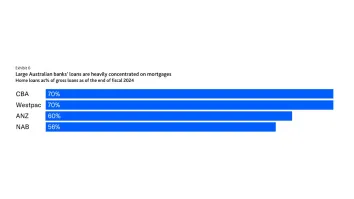
Reaching the future of banking through modernised operations and data management
Banks are now compelled to up the ante to compete with fintechs who have grown wise in leveraging data.
Banks have mainly supported customers’ financial needs in the past. However, as their needs started changing and the technologies have evolved over the years, new entities have also entered the scene and are starting to become a threat for banks who are late to innovate.
These newcomers, in the form of fintechs, are armed with technology which utilises data to create products and services tailored to the modern consumers, filling the gap left by traditional banks who are weighed down by legacy technology.
Now under extreme pressure to keep up with the competition, banks now have to employ the same technologies to ride the digitalisation and automation waves. They also have to modernise their operations and maximise the full value of data to reach the future faster.
This has been the main topic of the latest virtual roundtable hosted by digital technology expert Hitachi Vantara, in partnership with Asian Banking and Finance. Entitled “Bringing the Bank of the Future to Today,” the virtual event sought to identify the bottlenecks in data management that are limiting banks to utilise the full potential of data and reimagine data management practices that are fit for the future.
Hitachi Vantara’s Chief Solution Architect at Asia Pacific Seng Joo Lim opened the roundtable with a discussion on the evolution of data architecture over the years, fast-forwarding to today wherein a data lake house has been established. It is a new open data management architecture that combines the flexibility, cost efficiency, asset transactions, data warehouse, enabling business intelligence machine learning on the data.
“What does the future hold?. Demand requires improved efficiency, reduced costs, and agility to data. We call it DataOps,” Lim said.
Right data, right place, right time, right person
Lim observed that data ops has been going up the innovation trigger. DataOps has three key pillars: agility, governance, and operations. He also mentioned that the purpose of the office is to streamline the whole flow from source to consumer, so businesses can be more agile.
“Some of the more important elements include agile development, continuous integration, and intensive use of AI. Supporting this practice requires architecture that is more flexible, adaptable and agile than previous architecture,” he said.
Lim added that the lower DataOps are delivered through its portfolio of products to allow customers to address some of the more pressing data management requirements, allowing for data flow orchestration, monitoring with a web user interface, the analytics part for data pipeline management, the data catalogue, amongst others.
“The merchants can see advanced analytics, customer profile 360 and other advanced analytics information. So besides providing additional value, this market leader is monetising their data and creating new revenue streams from selling their data to their merchants,” he said.
With banks having a lot of information and data to process daily, this raises the question of data protection. Lim mentioned that they can leverage on data catalogues, such as Lumada, or artificial intelligence to automatically search and type such sensitive information.
“What it does is [it is] able to automatically identify those sensitive data that is needed, goes through your whole data lake, be in different formats… and identify them with high accuracy. So with this automation it saves many hours of manual work from the business,” Lim said.
He added that the engineers for such solutions also increase the accuracy of protecting the correct data. Certain less sensitive data such as phone numbers are also masked for downstream consumption without any breach of customers’ personally identifiable information.
Liberating data in the financial industry
Meanwhile, CIMB Group’s Group Chief Technology & Data Officer Ros Yusoff shared her insights on how data can be leveraged responsibly. She said that over the years, CIMB has begun using data to have more of a 360-customer view, to increase product penetration, and improve cross-sale rate but for nothing other than better revenue uplift, which she noted as ‘quite typical of any financial institution.’
Through the data CIMB has collected over the years, Ros said the bank is now able to do real-time triggers, such as financial transaction reminders and targeted campaigns.
Ros shared that the bank has also embarked on digital personalisation for customers to provide solutions that match their financial behaviours. However, this is not without challenges.
One of those challenges is struggling to find good use cases when it comes to data. Ros mentioned that there are barriers in many industries, especially for financial institutions that organisations should take note of. Whilst they have the platforms and the means to leverage data, they have to see as well if the data is usable.
“Coming up with good business, good cases that can be measured by linking it directly to revenue uplift, is through an uphill battle, something that we have not figured out yet,” she said.
She added that financial products and systems are added over a long period of time, having been developed with their own specific rules and specs. For Ros, having that data quality can also be a problem, but there have been bandages added for various reasons over time, which added to the complexity to get good quality data across the various systems.
Moreover, Ros said that the regulatory dimension of data management has to be looked at as well. She mentioned that masking of data is not something to be taken lightly when it comes to regulatory controls, adding that the financial industry is tightly regulated by central banks.
At the same time, she said that financial institutions are faced with the challenge of innovating whilst always ensuring they remain in line with regulatory requirements.
She emphasised that the main reason data and processes need to be liberated is to increase banks’ ability to use the information to generate ‘actionable insights’ that could help organisations achieve their goal. However, she highlighted that it is also crucial for banks to act responsibly and minimise the risk of any misuse of data, in line with regulations and privacy laws.
Lastly, Ros mentioned that data ethics is also a challenge for financial institutions.
“We all have moral obligations in our methods for gathering, protecting, and using personally identifiable information and how it affects individuals,” she said.
Ros added that customers’ consent and transparency in collecting, storing and using data collected, followed by ensuring data subjects’ privacy, are key to banks.



















 Advertise
Advertise










